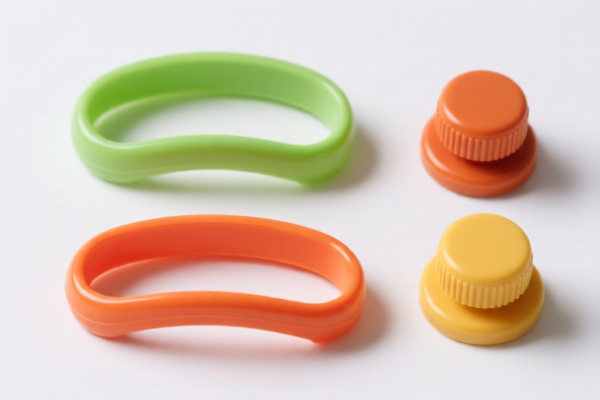| HS Code | Official Doc | Tariff Rate | Origin | Destination | Effective Date |
|---|---|---|---|---|---|
| 4202925000 | Doc | 59.2% | CN | US | 2025-05-12 |
| 4205000500 | Doc | 57.9% | CN | US | 2025-05-12 |
| 4205008000 | Doc | 55.0% | CN | US | 2025-05-12 |
| 9620005000 | Doc | 60.3% | CN | US | 2025-05-12 |
| 9620005500 | Doc | 58.3% | CN | US | 2025-05-12 |
| 9602005080 | Doc | 40.2% | CN | US | 2025-05-12 |
| 3503005550 | Doc | 2.8¢/kg + 3.8%+37.5% | CN | US | 2025-05-12 |




Guitar Bag
A guitar bag is a soft case used to carry and protect a guitar. Unlike a hard case, a guitar bag is typically constructed from padded fabric materials, offering a balance between portability and protection for everyday use.
Material
Guitar bags are commonly made from the following materials:
- Nylon: Durable, water-resistant, and relatively inexpensive. A common choice for standard gig bags.
- Polyester: Similar to nylon in terms of durability and water resistance, often used in more affordable bags.
- Canvas: Offers a more vintage aesthetic and moderate protection.
- Cordura: A highly abrasion-resistant nylon fabric, used in premium bags for increased durability.
- Padding: Typically foam padding of varying thickness (5mm to 20mm or more) to cushion the instrument from impacts. Higher-end bags often use multiple layers and densities of foam.
- Interior Lining: Soft materials like fleece or velvet protect the guitar's finish.
Purpose
The primary purpose of a guitar bag is to:
- Protect: Shield the guitar from scratches, dust, and minor impacts during transport and storage.
- Portability: Allow for easier carrying of the instrument compared to a hard case.
- Convenience: Generally lighter and more compact than hard cases.
Function
Guitar bags provide protection through:
- Padding: Absorbs shocks and cushions the instrument.
- Reinforcement: Some bags include internal bracing or structural elements for added support.
- Zippers & Closures: Secure the instrument within the bag.
- Handles & Straps: Allow for comfortable carrying, typically including a shoulder strap and a carry handle.
- Pockets: Provide storage for accessories like tuners, picks, cables, and sheet music.
Usage Scenarios
- Gigging Musicians: Transporting guitars to and from performances.
- Students: Carrying guitars to and from lessons or school.
- Travel: Convenient for air travel or road trips (though a hard case is recommended for checked baggage).
- Storage: Protecting guitars from dust and minor damage when not in use.
Common Types
- Gig Bag: The most common type, offering basic protection for everyday use. Often unpadded or lightly padded.
- Padded Gig Bag: Offers increased padding for better protection.
- Deluxe Gig Bag: Features thicker padding, reinforced construction, multiple pockets, and often includes features like a waterproof exterior.
- Acoustic Guitar Bag: Specifically designed for acoustic guitars, often with a contoured shape.
- Electric Guitar Bag: Designed for electric guitars, often with a more streamlined shape.
- Bass Guitar Bag: Larger and more robust than guitar bags, designed for bass guitars.
- Backpack Gig Bag: Features backpack straps for hands-free carrying.
- Multi-Guitar Bag: Designed to carry multiple guitars simultaneously (typically two).
Guitar bags fall under several potential classifications depending on their material and specific features. Here's a breakdown of relevant HS codes based on the provided information:
- 4202925000: This code covers “Trunks, suitcases, vanity cases, attache cases, briefcases, school satchels…traveling bags…knapsacks and backpacks, handbags, shopping bags…wallets, purses…tool bags, sports bags…and similar containers, of leather or of composition leather, of sheeting of plastics, of textile materials, of vulcanized fiber or of paperboard, or wholly or mainly covered with such materials or with paper.” If the guitar bag is made of leather, composition leather, plastics, or textile materials, this is a likely classification. The total tax rate is 59.2%.
- 9620005000: This code covers “Monopods, bipods, tripods and similar articles: Other: Of plastics”. If the guitar bag incorporates plastic structural components or is primarily made of plastic, this code may apply. The total tax rate is 60.3%.
- 9620005500: This code covers “Monopods, bipods, tripods and similar articles: Other: Of wood”. If the guitar bag incorporates wood structural components or is primarily made of wood, this code may apply. The total tax rate is 58.3%.
It is important to determine the primary material of the guitar bag to select the correct HS code. If the bag is constructed from a combination of materials, the material that provides the essential character of the bag should be used for classification.
Customer Reviews
No reviews yet.